Human Anatomy and Physiology
1/181
There's no tags or description
Looks like no tags are added yet.
Name | Mastery | Learn | Test | Matching | Spaced |
|---|
No study sessions yet.
182 Terms
Superior (cranial)
toward the head end or upper part of a structure or the body; above
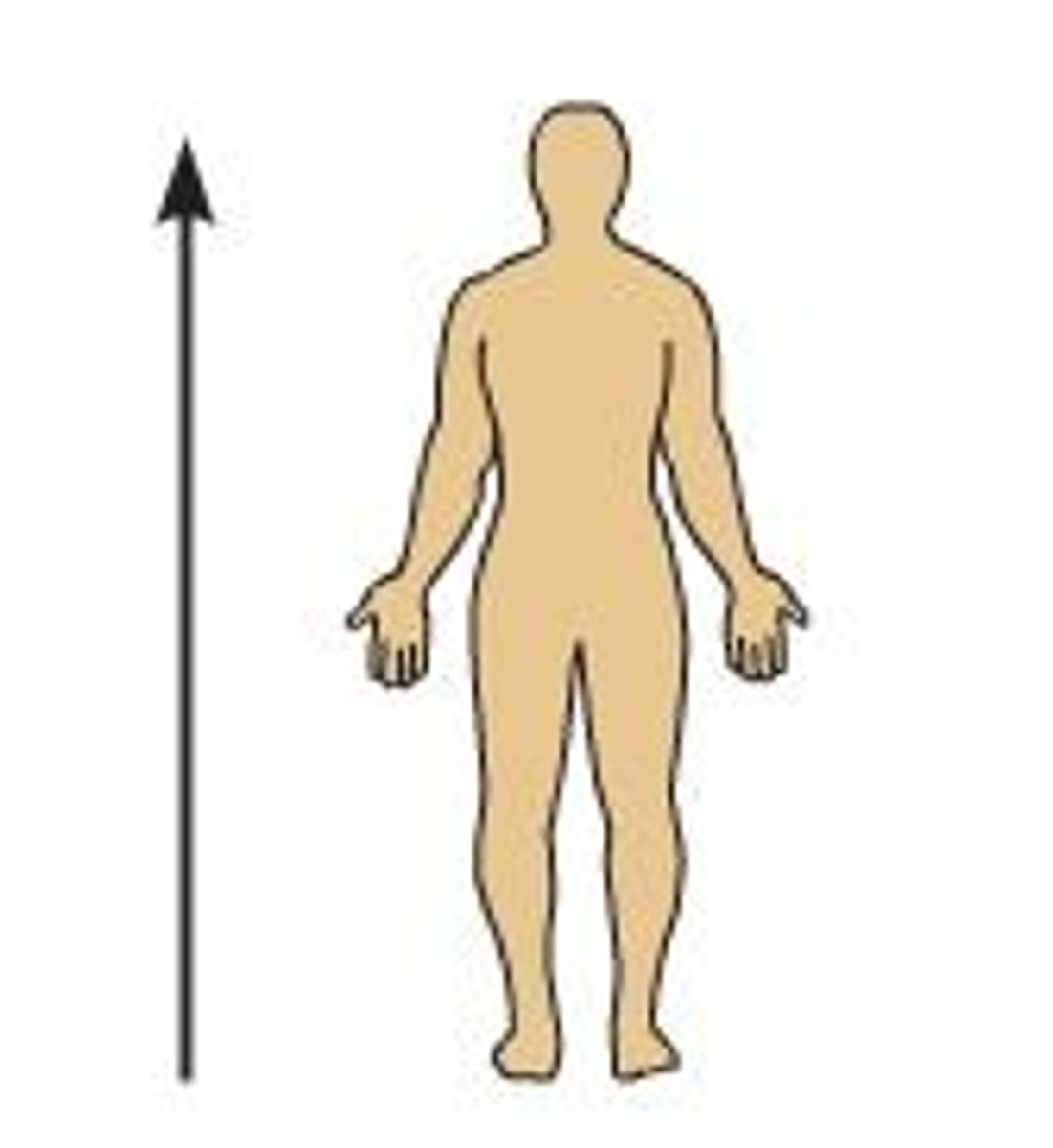
Inferior (caudal)
away from the head end or toward the lower part of a structure or the body; below
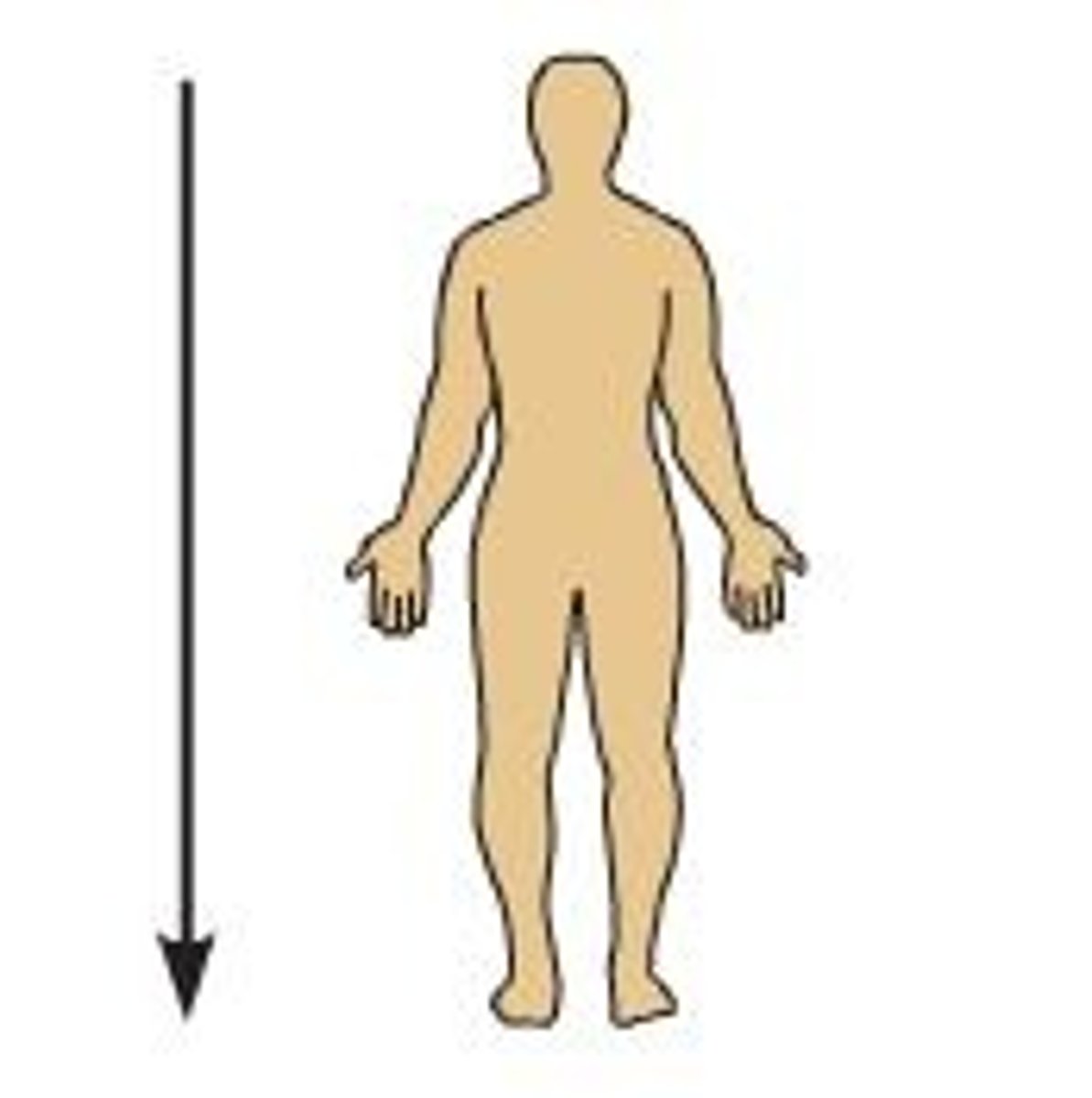
Ventral (anterior)
toward or at the front of the body; in front of
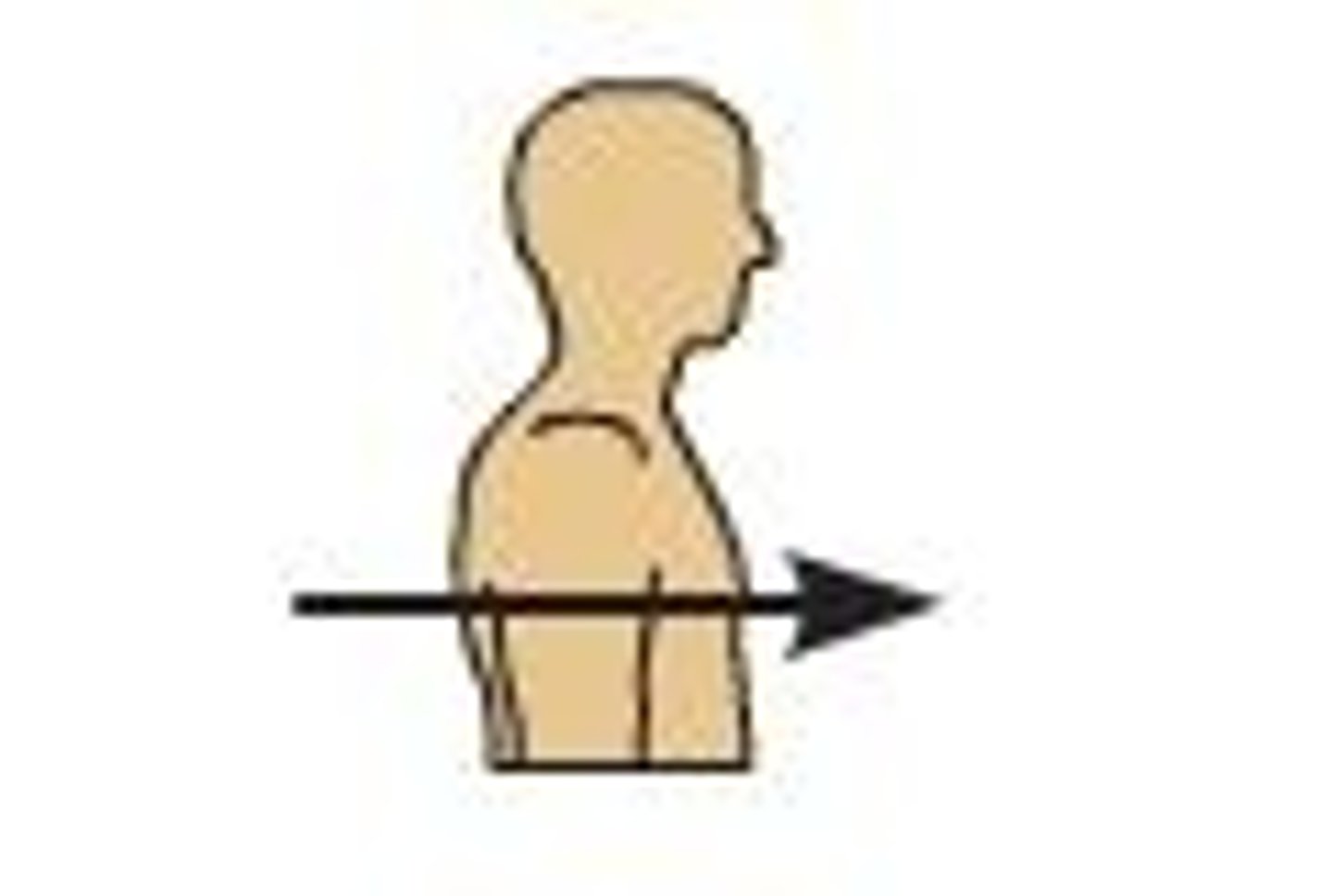
Dorsal (posterior)
Toward or at the back of the body; behind
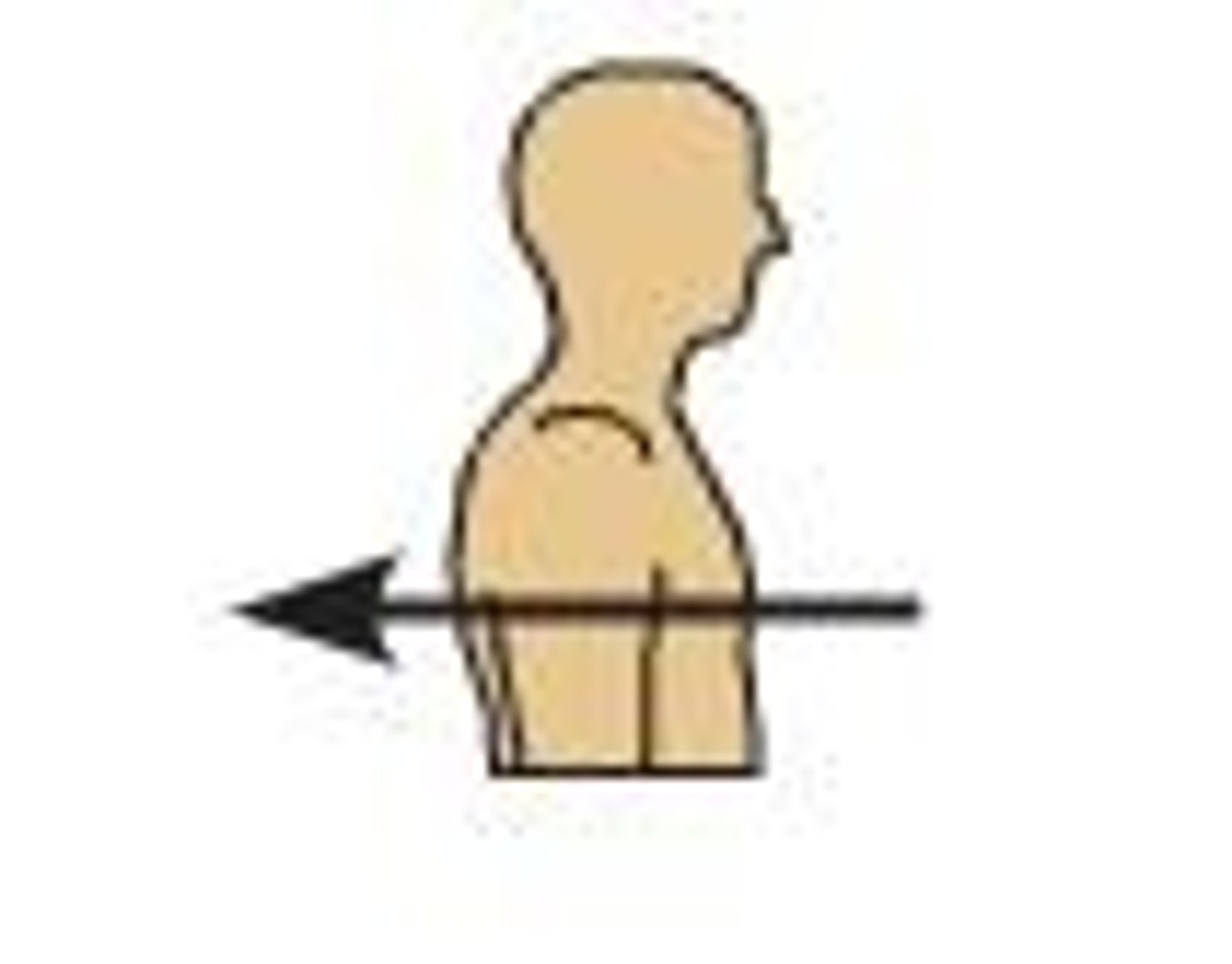
Medial
toward or at the midline of the body; on the inner side of
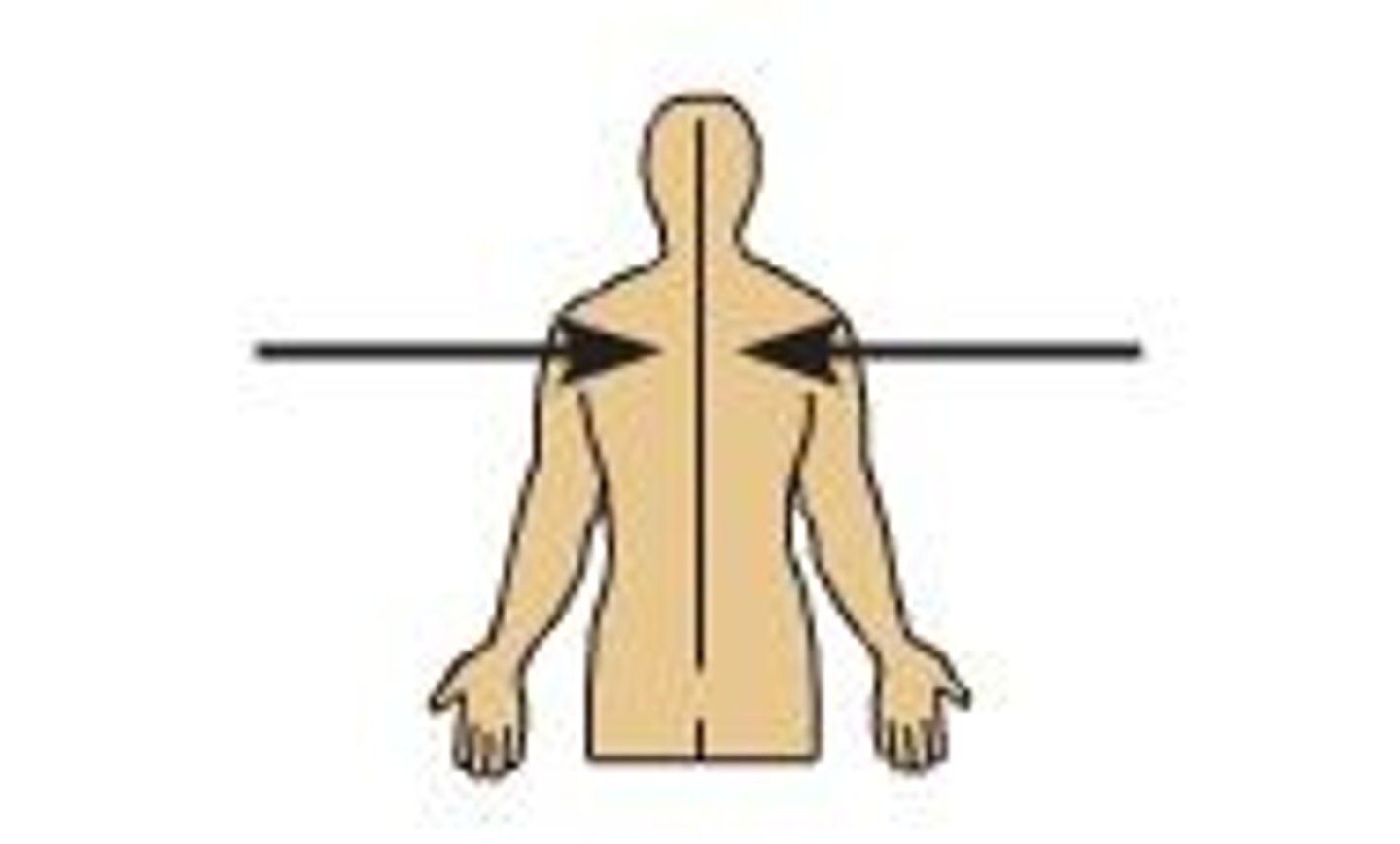
Lateral
away from the midline of the body; on the outer side of
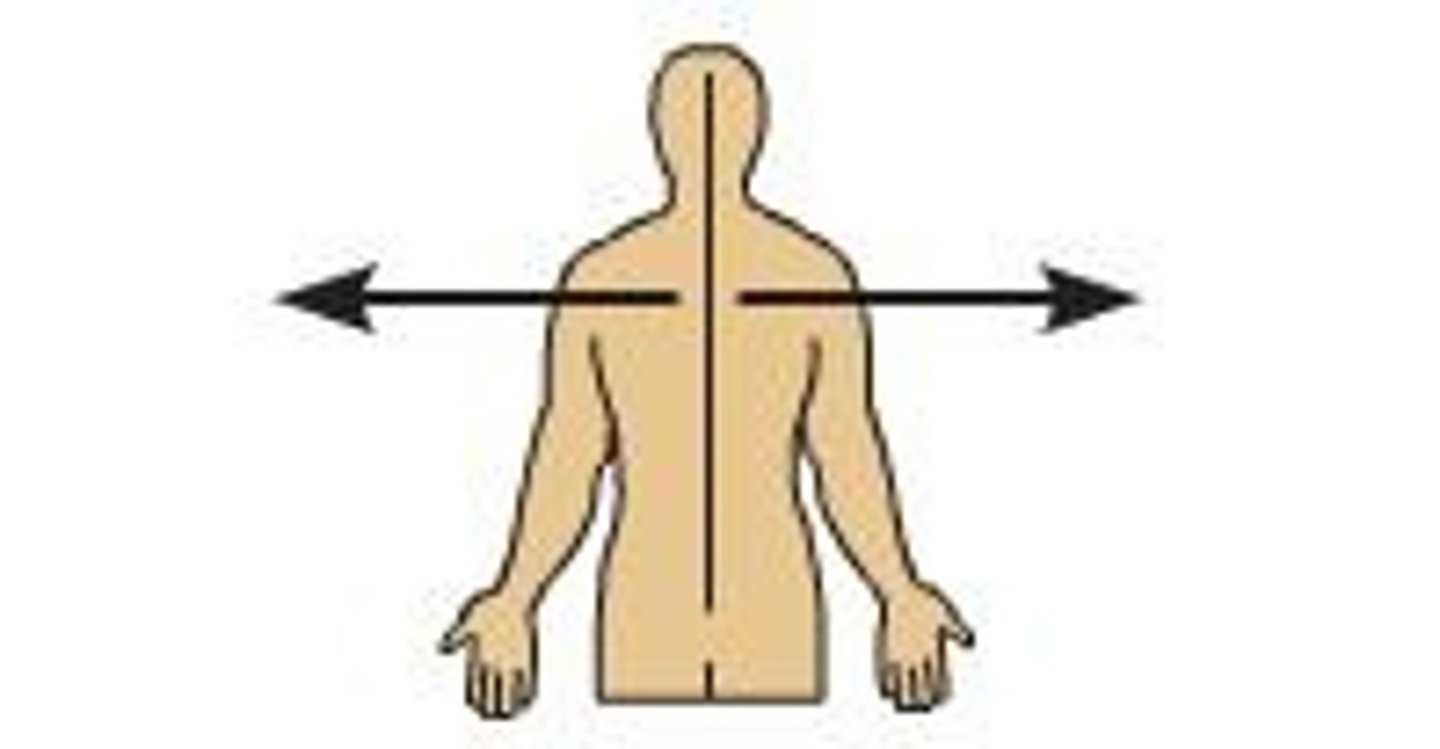
Intermediate
between a more medial and a more lateral structure
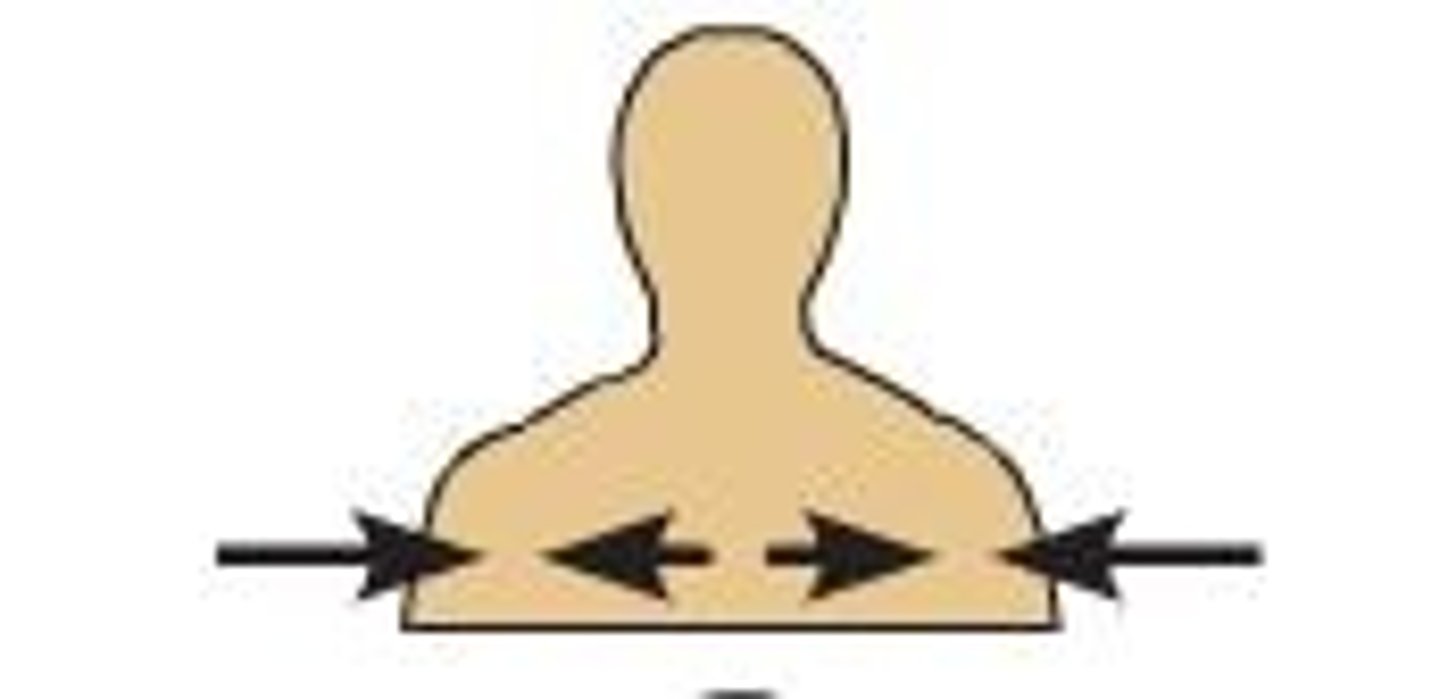
Proximal
closer to the origin of the body part or the point of attachment of a limb to the body trunk
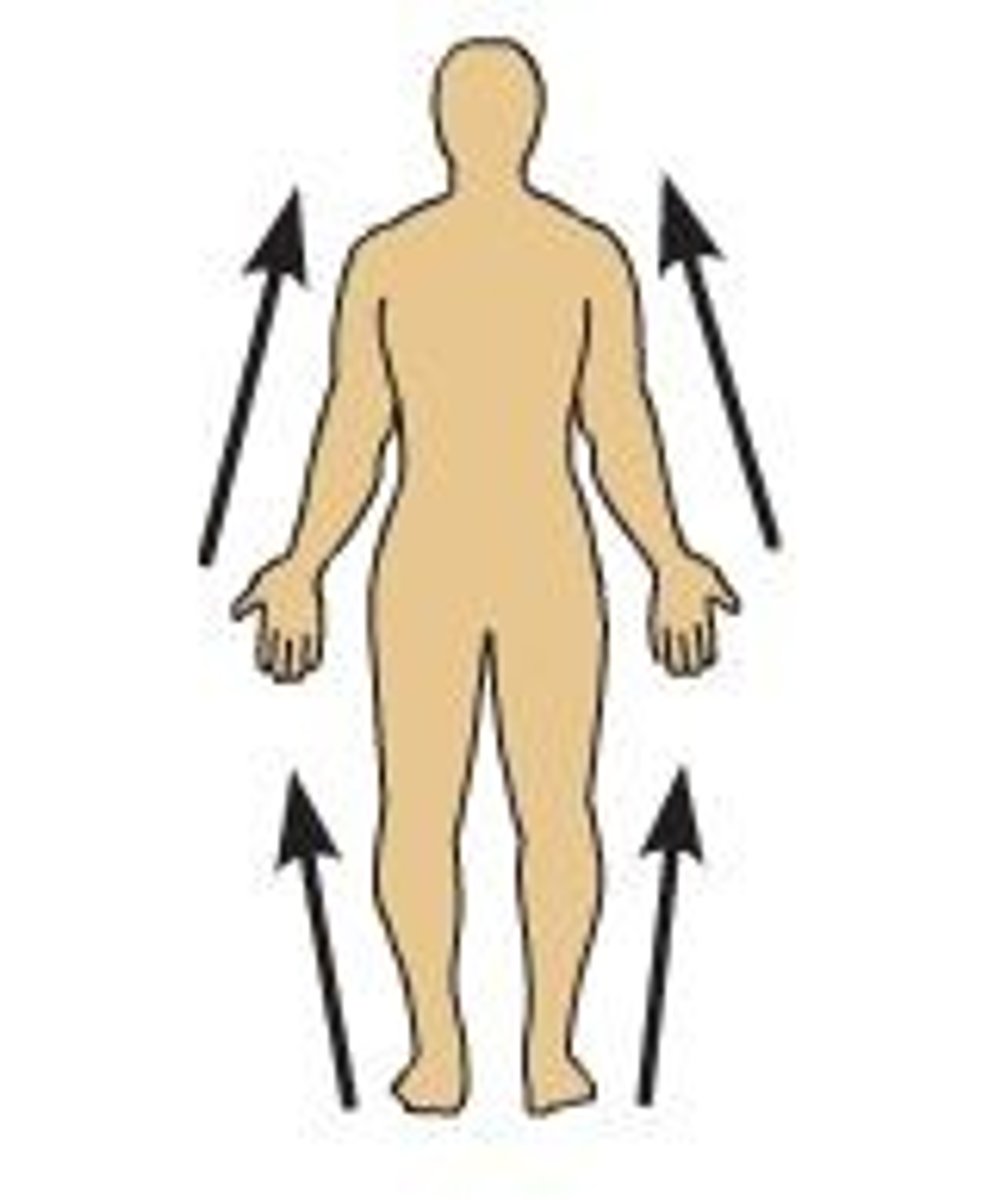
Distal
farther from the origin of a body part or the point of attachment of a limb to the body trunk

Superficial
toward or at the body surface
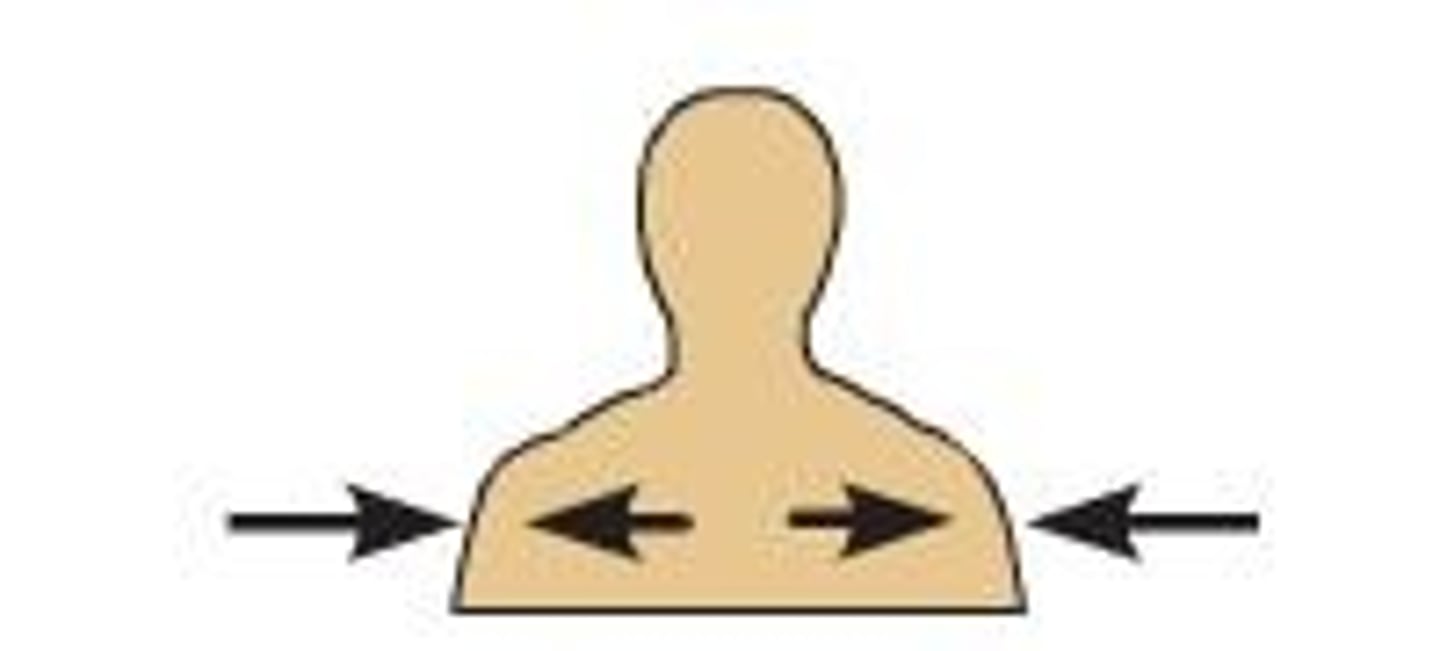
Deep (internal)
away from the body surface; more internal
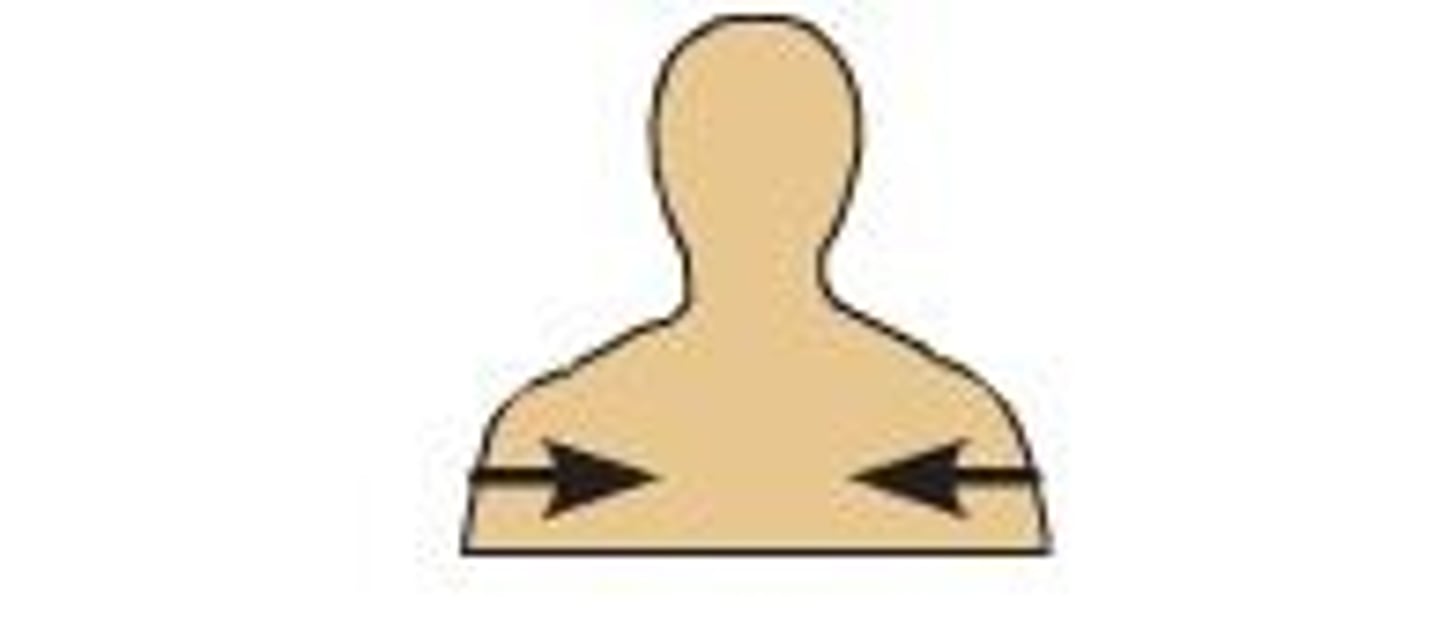
Anatomical Position
erect, feet forward, arms at side with palms facing forward, head facing forward, internationally know
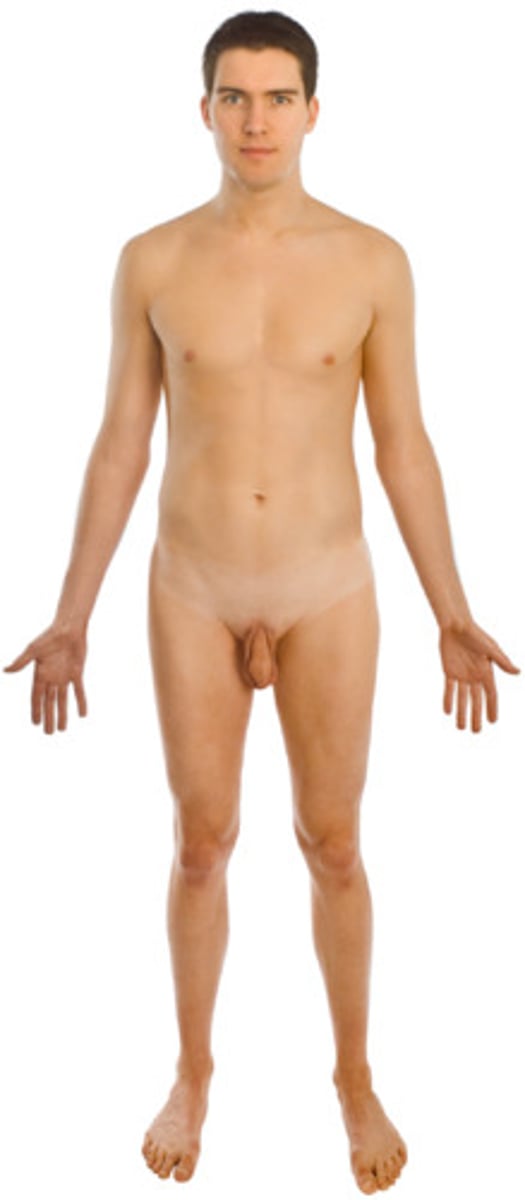
Axial
fundamental division of our body. Makes up the main axis of our body, includes the head, neck, and trunk.
Appendicular
fundamental division of our body. relating to the limbs and their attachments to the axis.
Orbital
pertaining to the eye socket (orbit)
Palmar
pertaining to the palm of the hand
Pedal
pertaining to the foot
Dorsum
pertaining to the back
Lumbar
pertaining to the area of the back between the ribs and hips; the loin
Occipital
Back of the head
Plantar
pertaining to the sole of the foot
Vertebral
pertaining to the area of the spinal column
Anterior/Ventral Body
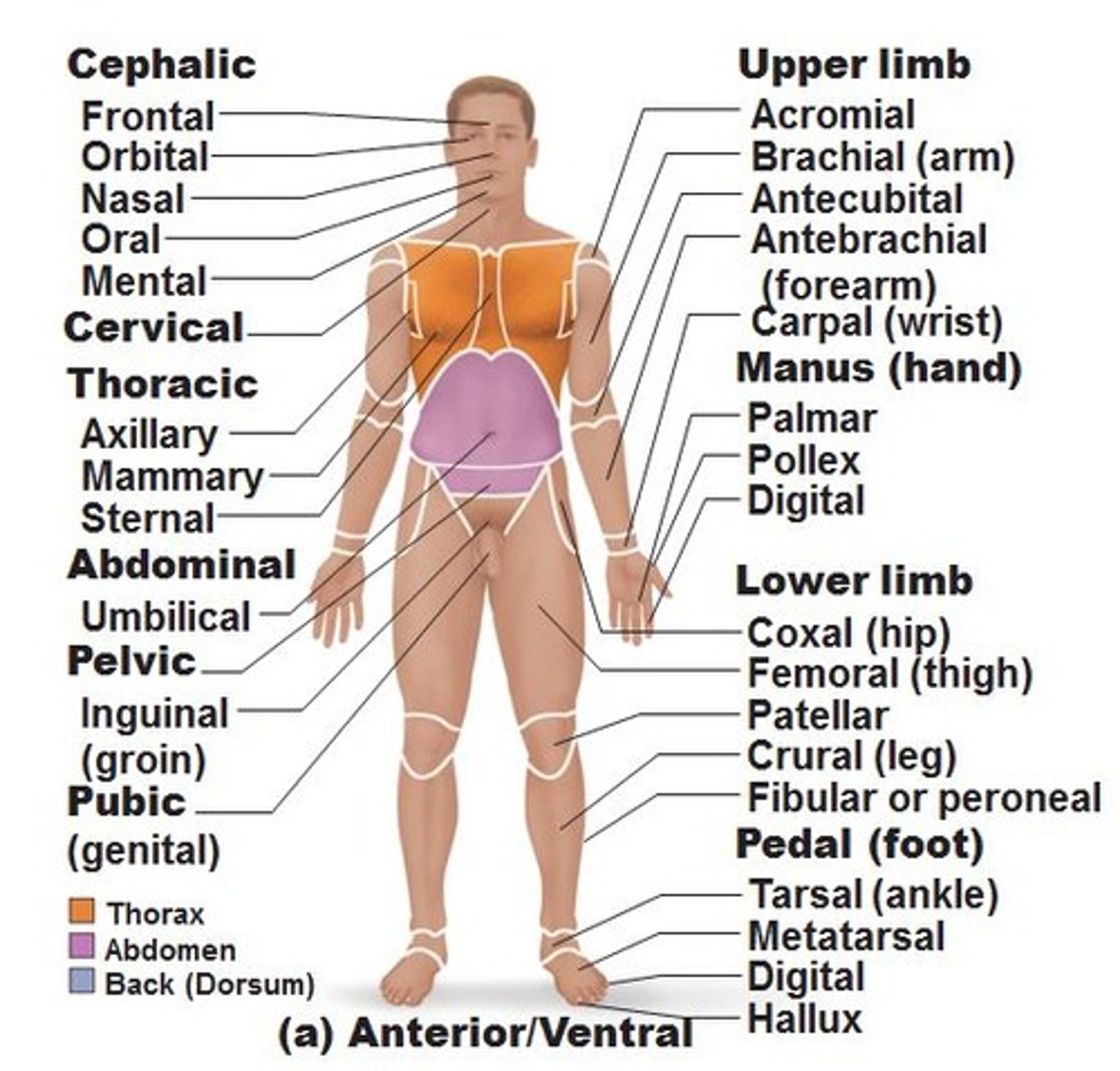
Posterior/Dorsal Body
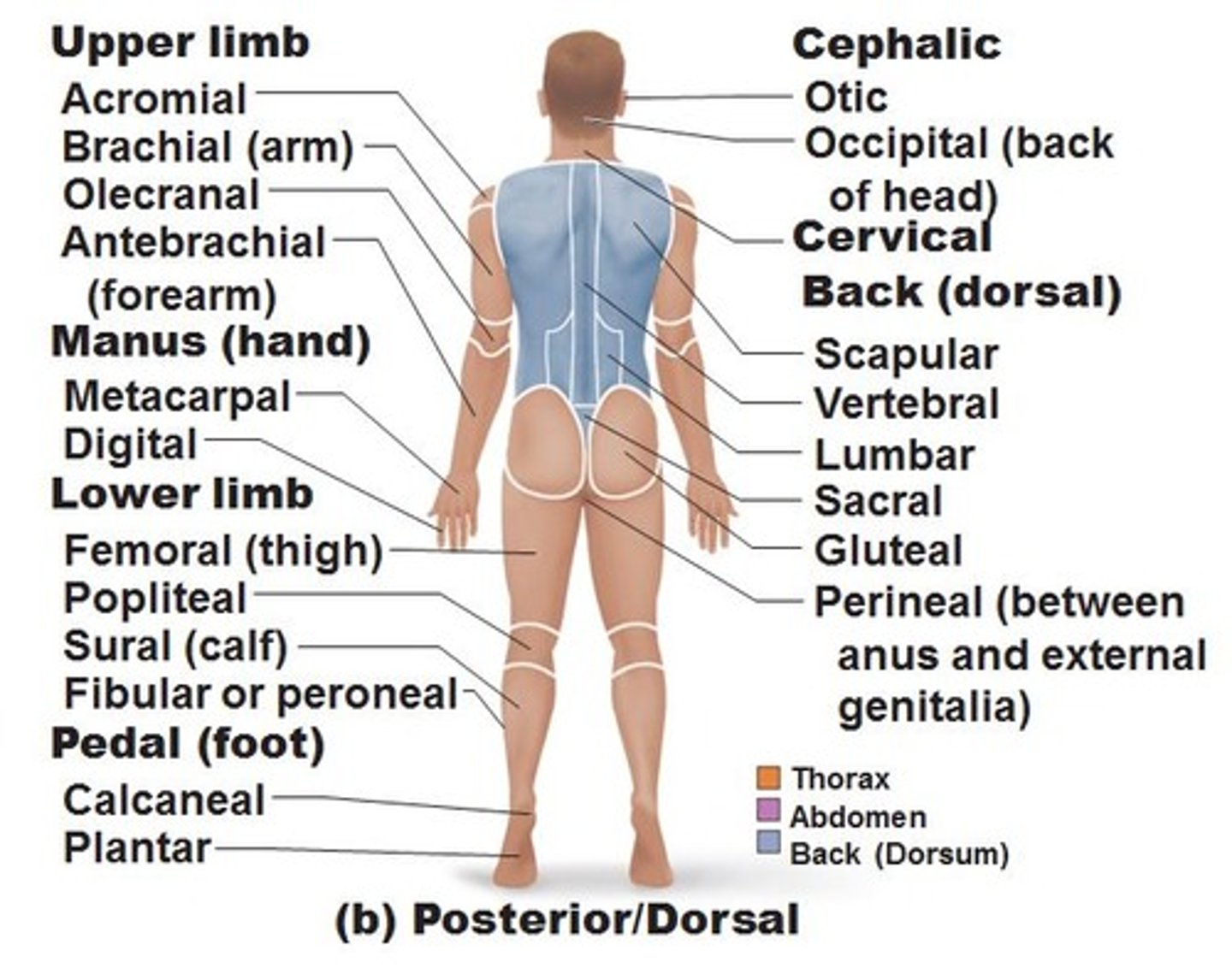
Sagittal
a vertical plane that divides the body into right and left parts
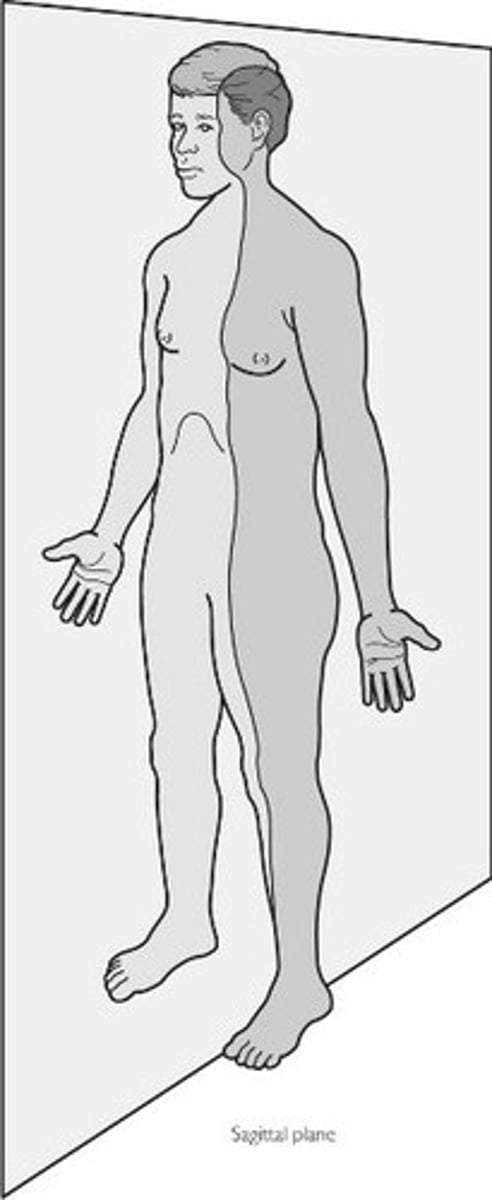
Median Plane (midsagittal plane)
sagittal plane that lies exactly in the midline
Parasagittal Planes
all other sagittal planes offset from the midline
Frontal Planes (Coronal Plane)
like sagittal plane lie vertically, divide body into anterior and posterior parts
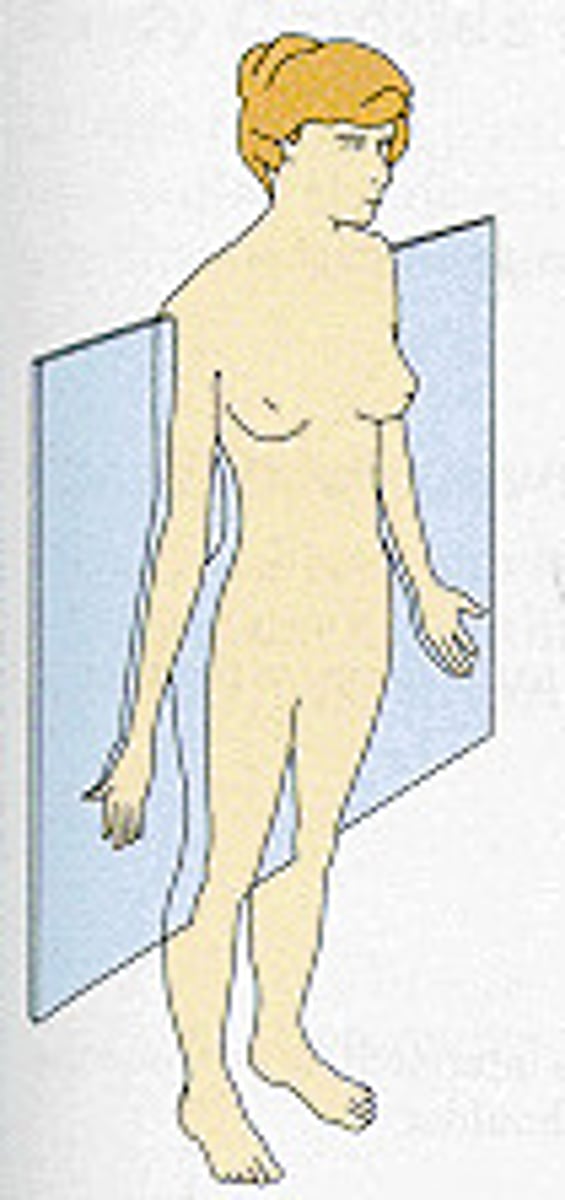
Transverse/Horizontal Plane
runs horizontally from right to left, dividing the body into superior and inferior parts. (Transverse is perpendicular to long axis of an organ, horizontal is from front to back)
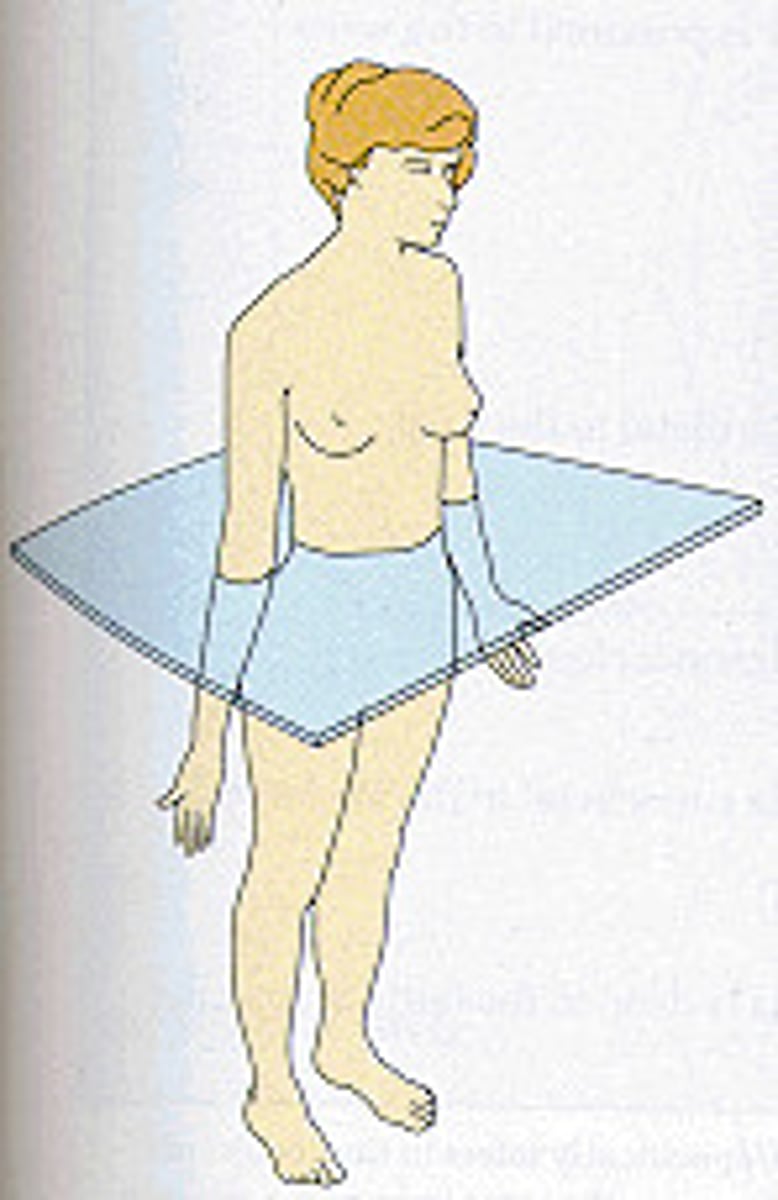
Oblique Sections
cuts made diagonally between the horizontal and the vertical planes
Dorsal Body Cavity
protects the fragile nervous system organs, has 2 subdivisions
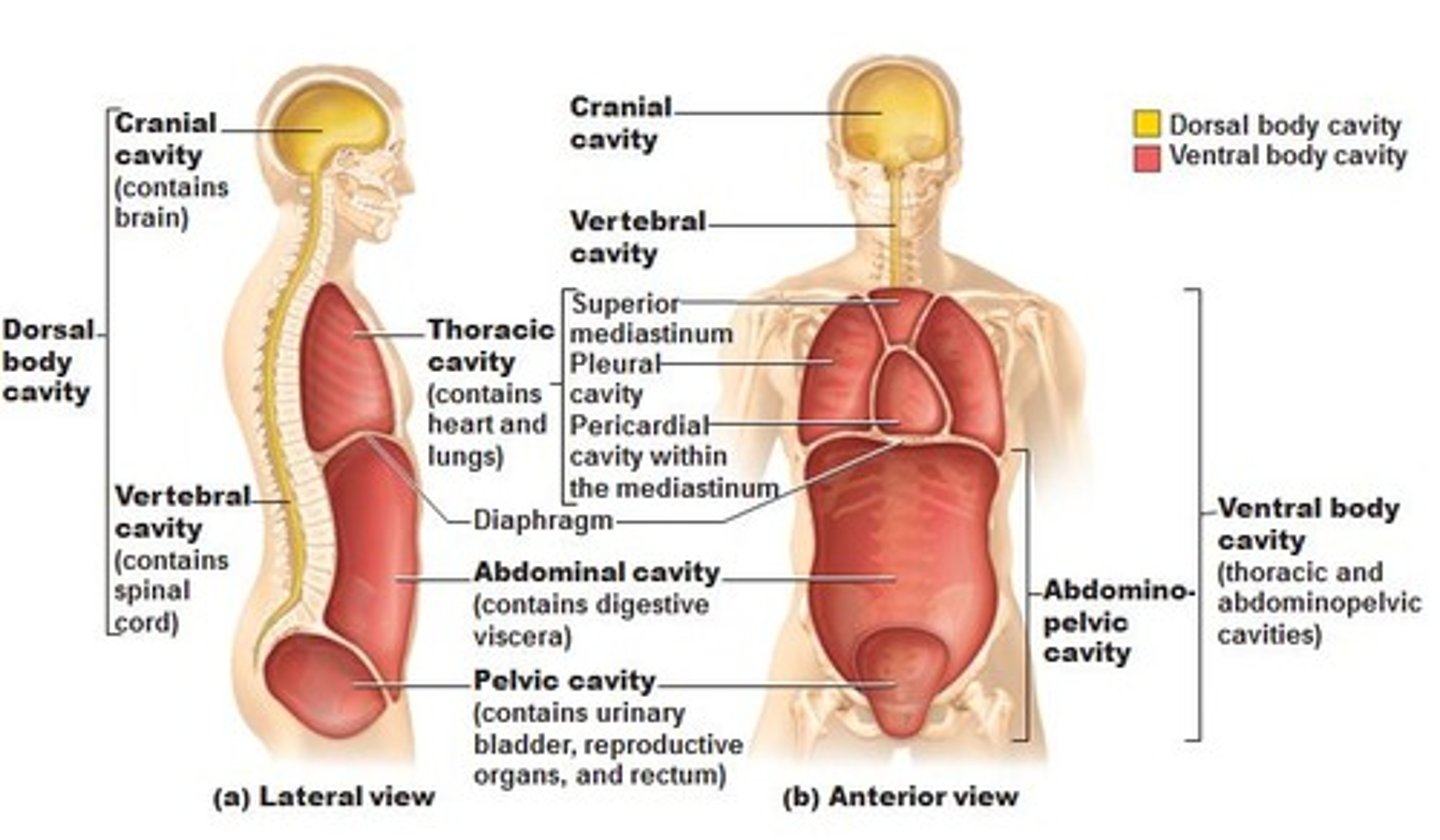
Cranial Cavity
in the skull, encases the brain
Vertebral Cavity (Spinal Cavity)
runs within the bony vertebral column, encloses the delicate spinal cord
Ventral Body Cavity
the more anterior and larger of the closed body cavities, has 2 major subdivisions, houses internal organs called Viscera
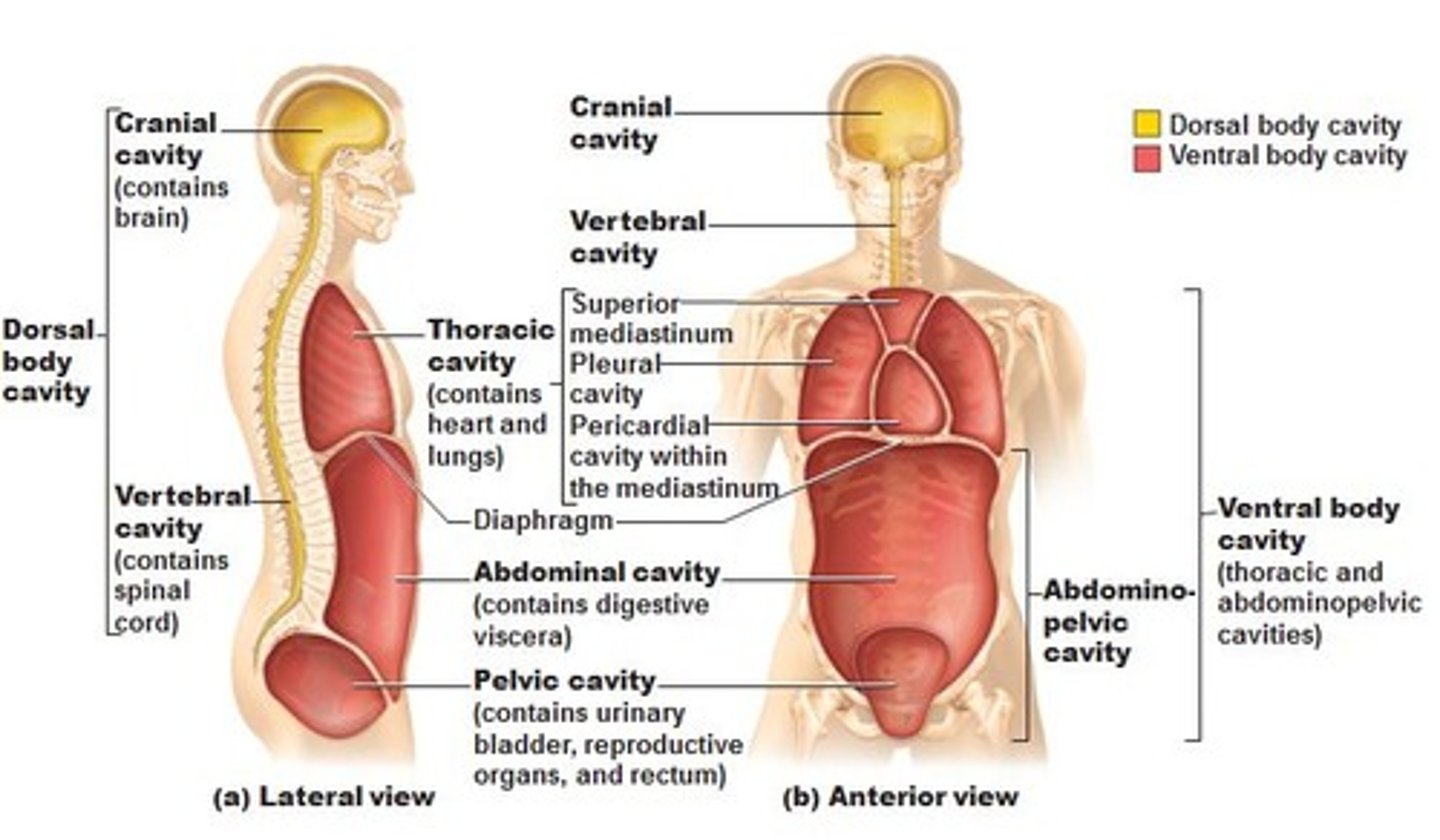
Thoracic Cavity
surrounded by the ribs and muscles of the chest
Pleural Cavities
lateral subdivision of Thoracic Cavity, enveloping a lung, and the Medial Mediastinum
Medial Mediastinum
contains the pericardial cavity
Pericardial Cavity
encloses the heart and also surrounds the the remaining thoracic organs (esophagus, trachea, and others)
Abdominopelvic Cavity
seperated from thoracic cavity by the diaphram, a dome shaped muscle important in breathing. Has abdominal and pelvic cavities
Abdominal Cavity
Contains stomach, intestines, spleen, and liver, and other organs
Pelvic Cavity
Contains urinary bladder, reproductive organs, and rectum
Parietal Serosa
lines internal body walls
Visceral Serosa
covers the internal organs
Abdominopelvic Quadrants
Divisions used primarily by medical personnel
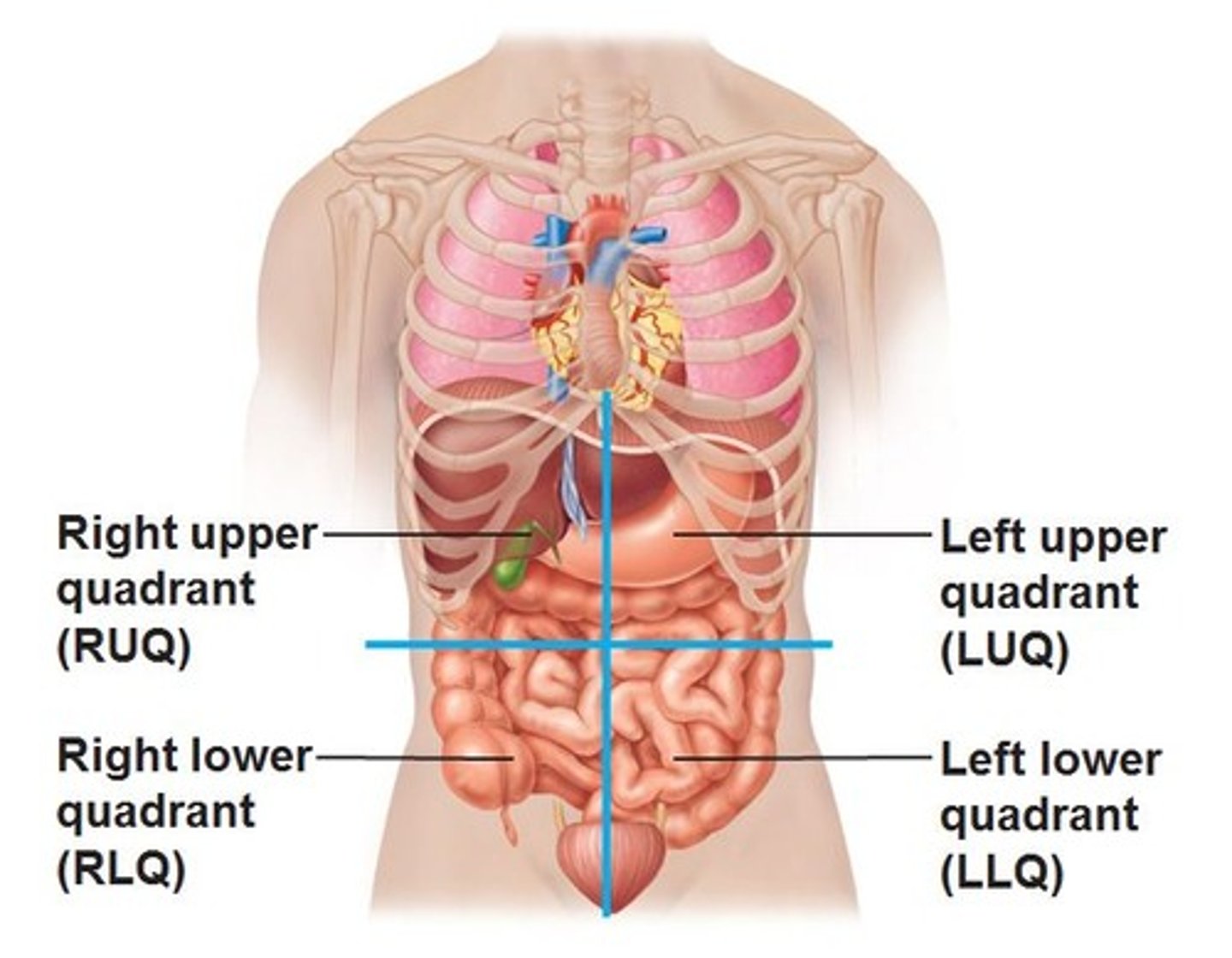
Abdominopelvic Regions
Nine divisions used primarily by anatomists
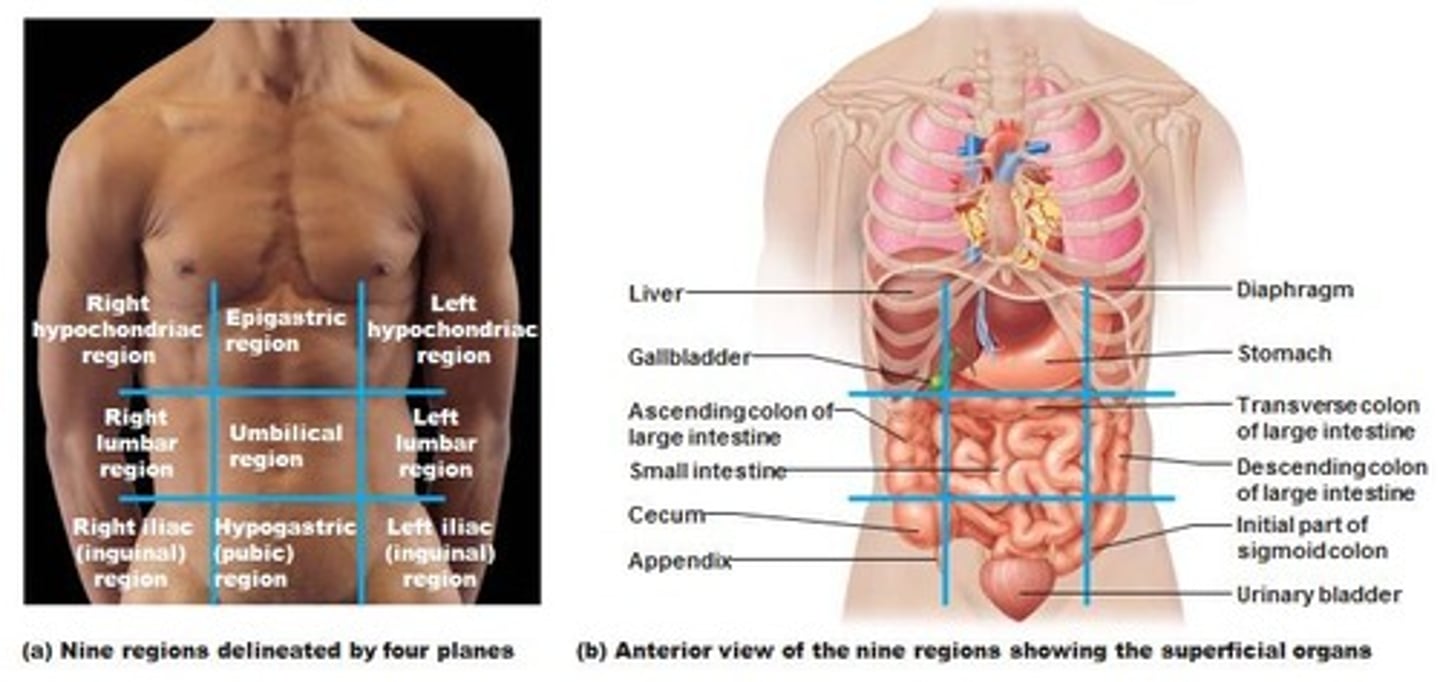
Umbilical region
The centermost region, which includes the umbilicus
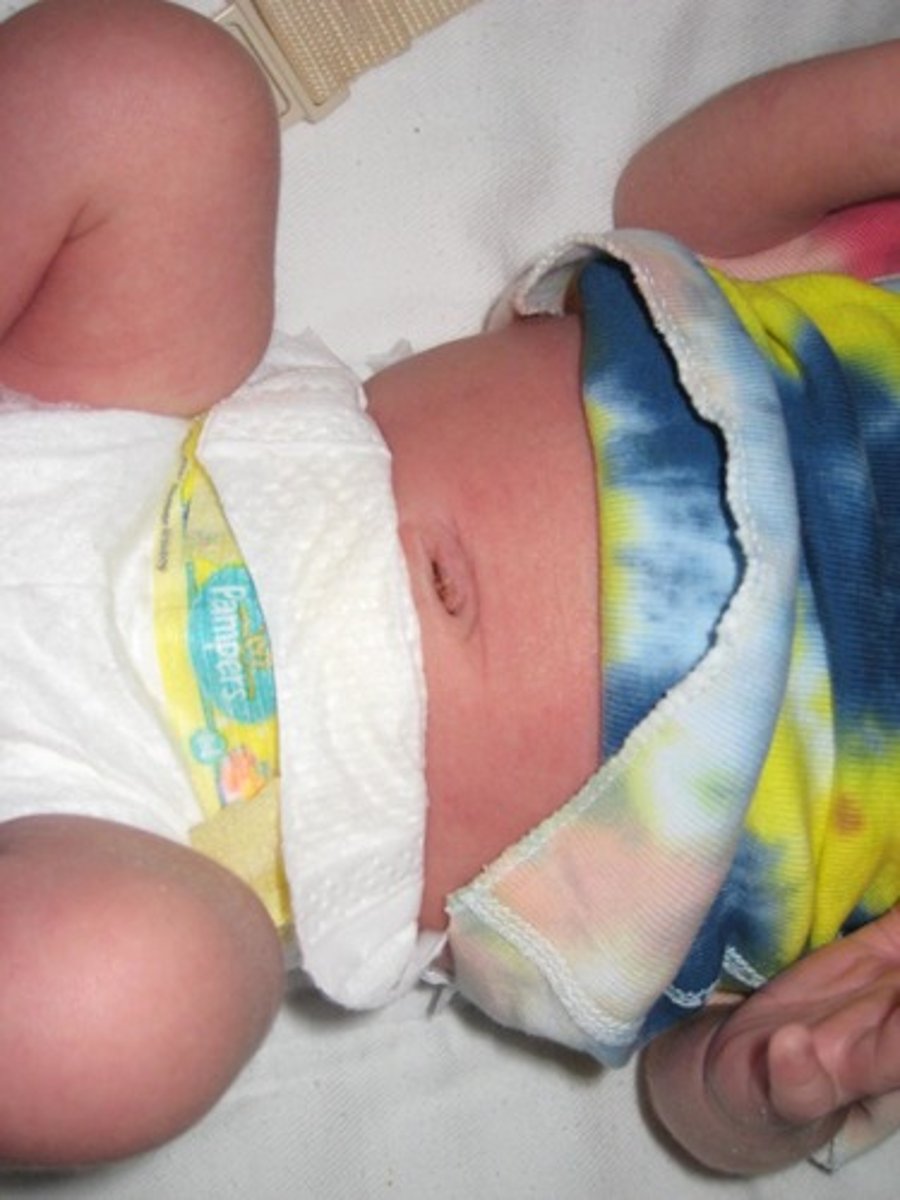
Right and Left Iliac or Inguinal Regions
located lateral to hypogastric regions, superior part of the hip bone
Right and Left Lumbar Regions
lie lateral to the umbilical region
Right and Left Hypochondriac Regions
Flank the epigastric region laterally
Oral and Digestive Cavities
aka mouth, teeth and tongue, this cavity is part of and continuous with the cavity of the digestive organs which opens to the exterior at the anus.
Nasal Cavity
located within and posterior to the nose, part of the respiratory system passageways
Orbital Cavities
in the skull house the eyes and present them in an anterior position
Middle Ear Cavities
carved into the skull lie just medial to the cardrums. contain tiny bones that transmit sound vibrations to the hearing receptors in the inner ears.
Synovial Cavities
Are joint cavities, enclosed within the fibrous capsules that surround freely movable joints of the body i.e. elbow and knee joints.
Secreate a lubricating fl. tht reduces friction as the bones move acrossone another.
What is anatomy?
the study of structure of body parts and their relationship to one another
What is physiology?
the study of function of the body - how the body parts work and carry out their life sustaining activities
What is gross or macroscopic anatomy?
the study of the large body structures, visible to the naked eye such as heart, lungs kidneys
What is regional anatomy?
the study of all the structures in a particular region of the body.ex: abdomen or legs
What is systemic anatomy?
the study of body systems such as the cardiovascular system
What are the 3 different subdivisions of gross or macroscopic anatomy?
regional, systemic, and surface anatomy
What is surface anatomy?
the study of internal structures as they relate to the overlying skin surface - e.g. - identifying the bulging muscles beneath a bodybuilders skin or to locate appropriate blood vessels in which to feel pulses or draw blood
What are 2 subdivisions of study for microscopic anatomy?
cytology (cells) and histology (tissues)
What is developmental anatomy?
Tracing structural changes that occur in the body throughout the life span -- Embryology is a subdivision of developmental anatomy that concerns developmental changes occurring before birth
What are some subdivisions of physiology?
renal physiology (operation of kidney), neurophysiology (nervous system), and cardiovascular physiology (operation of the heart and blood vessels)
What is the principle of complementarity?
anatomy and physiology are inseparable, the function always refects structure and what a structure can do depends on its specific form.
In what way does physiology depend of anatomy?
the operation or function of a structure is dictated by its anatomy
What are the levels of structural organization?
chemical (atoms and molecules), cellular, tissue, organ, organ system and organismal level
What does the digestive system do?
takes in nutrients, breaks them down into simple molecules that can be absorbed into the blood, and eliminates unabsorbed matter (feces)
What does the respiratory system do?
takes in oxygen and eliminates carbon dioxide
What does the urinary system do?
eliminates nitrogenous wastes and excess ions
What does the cardiovascular system do?
via the blood, distributes oxygen and nutrients to all body cells and delivers wastes and carbon dioxide to deposal organs
What does the integumentary system do?
Skin, hair and nails protect the body as a whole from the external environment - drying out, bacteria, heat, sunlight, chemicals
all ____ depend on organ systems to meet their survival needs
cells
_____ ____ work cooperatively to perform necessary life functions
organ systems
Integumentary system
Forms the external body covering and protects deeper tissues from injury - made up of hair, nails and skin
Skeletal System
Protects and supports body organs and provides a framework the muscles use to support movement. Made up of bones and joints
Muscular system
Allows manipulation of the environment, locomotion, and facial expression. Made up of skeletal muscles
Nervous system
The fast acting control system of the body; it responds to internal and external changes by activating appropriate muscles muscles and glands. Made up of the the brain, nerves and spinal cord
Endocrine system
Glands secrete hormones that regulate processes such as growth, reproduction, and nutrient use (metabolism) by body cells. Mad up of pineal, pituitary, thyroid and adrenal glands, thymus, pancreas, ovaries and testis
Cardiovascular system
Blood vessels transport blood, which carries oxygen, carbon dioxide, nutrients, wastes, etc. The heart pumps blood. Made up of blood vessels and heart
Lymphatic system/ immunity
Picks up fluid leaked from blood vessels and returns it to blood, disposes of debris in lymphatic system, houses while blood cells involved in immunity. Immune system attacks foreign substances in the body. Mad up of red bone marrow, thymus, lymphatic vessels, thoracic duct, spleen, and lymph nodes
Respiratory system
Keeps blood constantly supplied with oxygen and removes carbon dioxide. Made up of nasal cavity, pharynx, larynx, trachea, lungs and bronchus
Digestive system
Breaks down food into absorbable units that enter the blood for distribution to body cells. Indigestible foodstuffs are eliminated as feces Made up of oral cavity, esophagus, liver, stomach, small intestine, large intestine, rectum , and anus
Urinary system
Eliminates nitrogenous wastes from the body. Made up of kidneys, ureter, urinary bladder, and urethra
Male and female reproductive systems
Production of offspring. For male: prostate gland, penis, testis, scrotum, ductus deferens. female: mammary glands, ovary, uterine tube, uterus, and vagina
What are some functions of the lymphatic system?
it picks up fluid leaked from blood vessels and returns it to blood; disposes of debris in the lymphatic stream; houses white blood cells involved in immunity;
What are the necessary life functions?
maintaining boundaries, movement, responsiveness, digestion, metabolism, excretion, reproduction and growth
What is metabolism?
a broad term that includes all chemical reactions that occur within the body
includes breaking down substances into their simpler building blocks (catabolism), synthesizing more complex cellular structures from simpler ones (anabolism), and using nutrients and oxygen to produce ATP, the energy rich molecules that power cellular activities
What are the survival needs?
Nutrients (needed for energy and cell building), oxygen (approx. 20% of the air we breathe), water (60-80% of our body), normal body temp. (37 c) and atmospheric pressure (force that air exerts on the surface of the body
What is homeostasis?
the ability to maintain a relatively stable internal environment in an ever-changing outside world
What are control mechanisms for homeostasis?
3 components -- the receptor is a sensor that monitors the environment and responds to changes, called stimuli and then sends info to the control center where it is analyzed and determines the appropriate response or course of action (determines the set point - the level that must be maintained) and then the info flows to the effector which provides the means for the control centers response to the stimulus (output). The results of the response then feed back to influence the effect of the stimulus by either reducing it (negative feedback) or enhancing it (positive feedback)
What is negative feedback within homeostasis? and example
the response reduces or shuts off the original stimulus regulation of body temp (nervous mechanism) regulation of blood sugar (endocrine mechanism)
What separates living beings from nonliving objects?
Living organisms are able to maintain their boundaries, move, respond to environmental change, digest nutrients, carry out metabolism, dispose of wastes, reproduce and grow. while inanimate objects do not exhibit all of these
What name is given to all chemical reactions that occur within body cells
metabolism
Why is it necessary to be in a pressurized cabin when flying at 30,000 feet?
because the atmosphere is thinner at high altitudes and the amount of oxygen entering the blood under such conditions may be insufficient to maintain life
What's the process of negative back for regulation of blood volume by ADH
Receptors sense decreased blood volume, control center in hypothalamus stimulates pituitary gland to release antidiuretic hormone ADH, ADH causes the kidneys (effectors) to return more water to the blood.
What is positive feedback examples
the response enhances, exaggerates or accelerates the original stimulus (cascades); exhibits an amplifying effect; usually controls infrequent events ex: enhancement of labor contractions by oxytocin, platelet plug formation and blood clotting
Homeostatic imbalance is the ...what does this cause?
disturbance of homeostasis increases risk of disease, contributes to changes associated with aging, may allow destructive positive feedback mechanisms to take over (heart failure)
the head is _______ to the abdomen
superior
the navel is ______ to the chin
inferior